TDF
Meh might as well die
- Jun 24, 2023
- 474
"If you want to help someone you need to know something about them" - 'It's A Wonderful Life'
Info taken from

 www.verywellhealth.com
www.verywellhealth.com
'Next Generation" Psychotherapy Approaches:
These are therapies which take components from the core traditional therapy approaches in tailored ways, often for specific types of problems
Info taken from
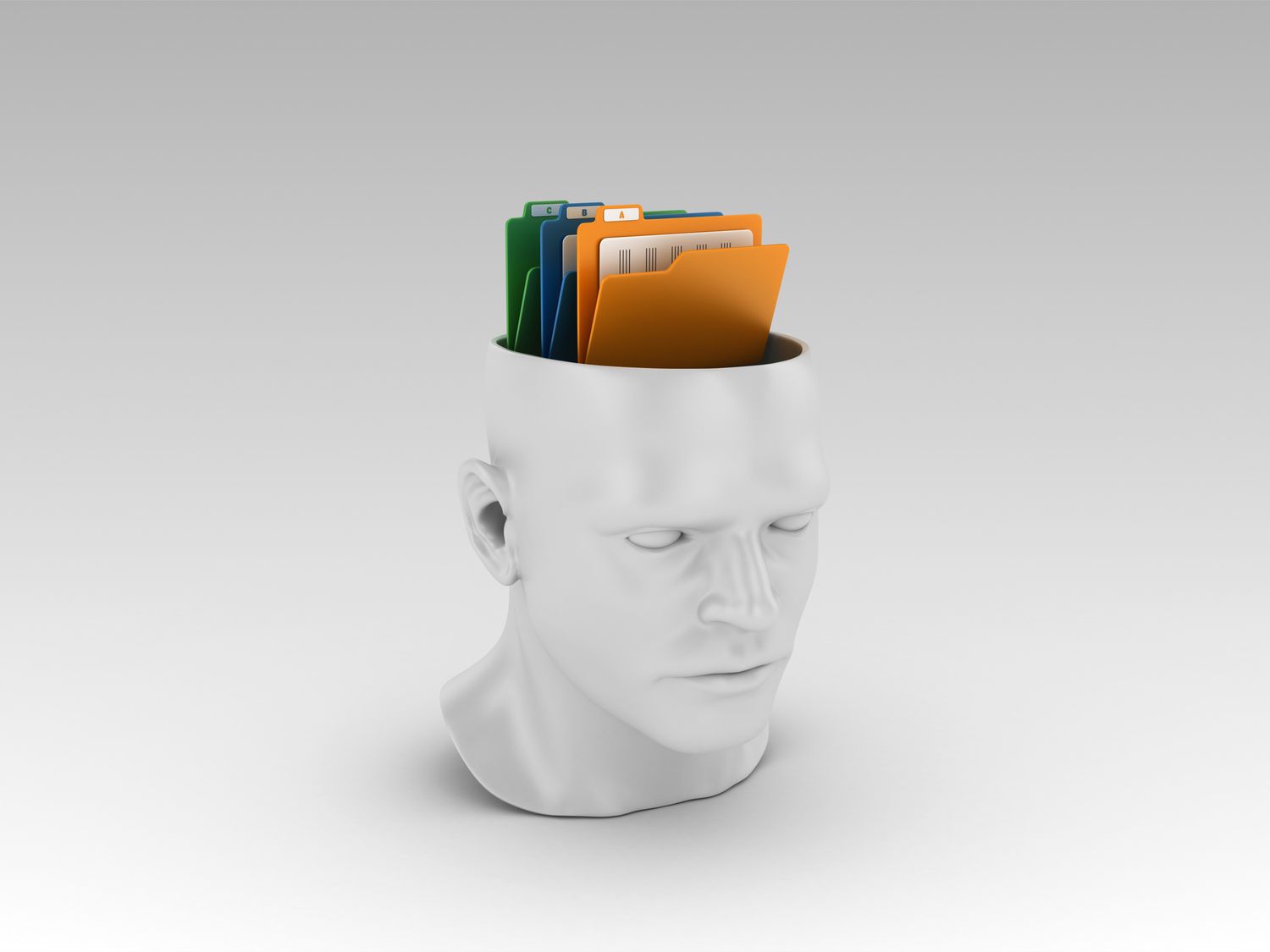
 www.thoughtco.com
www.thoughtco.com
 www.schemainstitute.co.uk
www.schemainstitute.co.uk
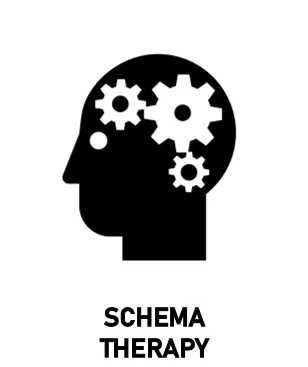
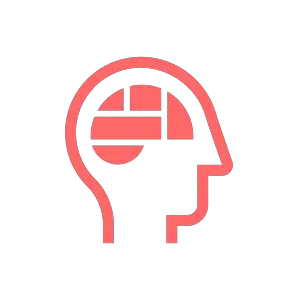 www.mentalhealthgeneral.com
www.mentalhealthgeneral.com
But I tried traditional therapy and it didn't work - now what?
Trauma-Specific Technique/Process-based Therapies
Trauma Focused Mind-body Therapies
A further theoretical approach which underpins many mind-body therapies is Polyvagal Theory (PV), which assumes how the nervous system responds in different situations and how understanding PV can help a person to navigate what is happening in their body through their experiences. A visual example is here
Pharmacological Therapies (aka Drugs)
Pill Identifier
E.g you found a pill and do not know what it is
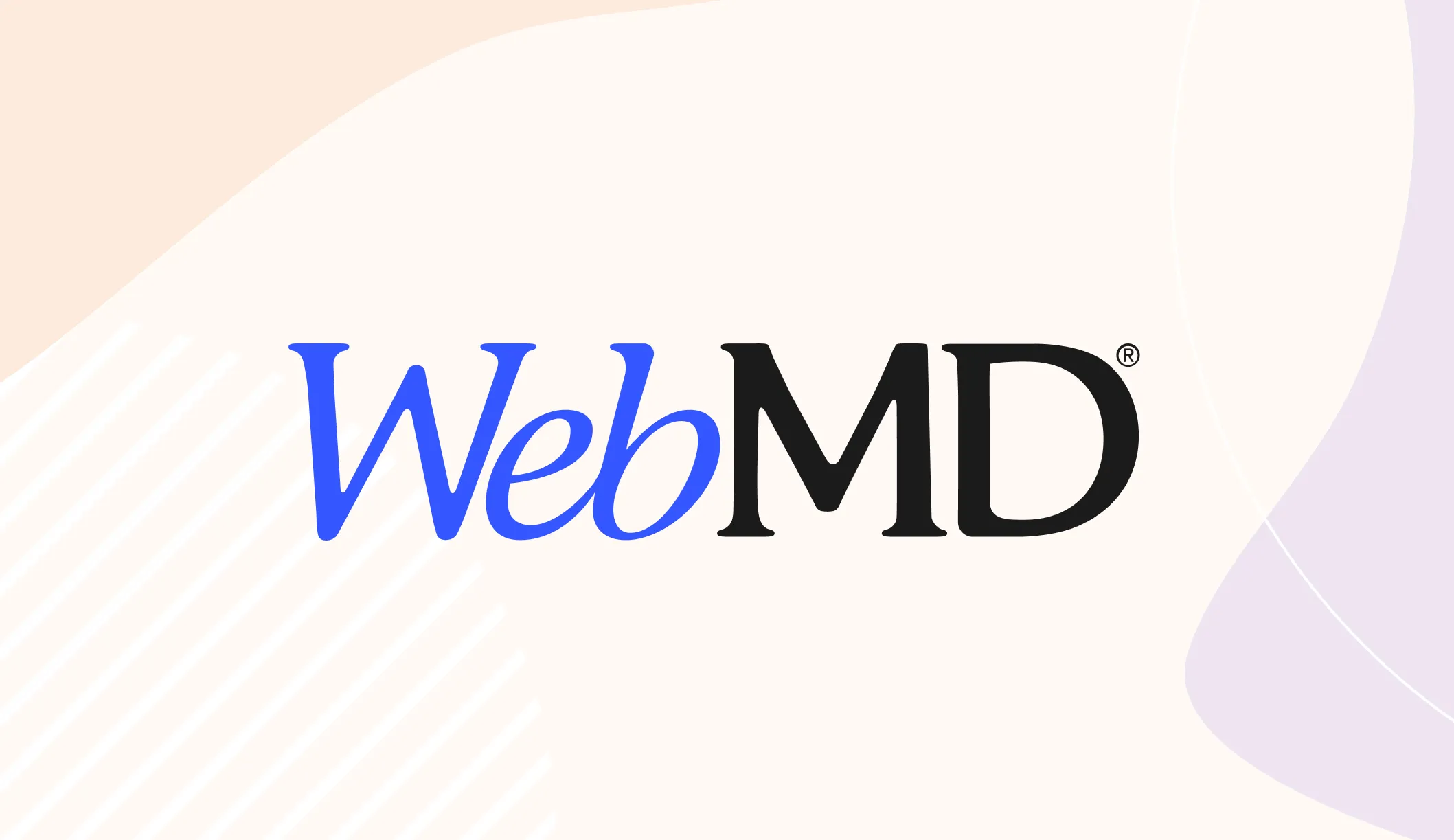
 www.webmd.com
www.webmd.com
Medical / Surgical Approaches
Considering therapy but don't know where to start? Hopefully this can be a starting point about what all those different terms mean, and help to pick the right therapist. There are also options further down for people where traditional therapies have not helped.
Psychotherapy is often used as an umbrella term for many different talk therapies and counseling.
There is not necessarily a better or worse approach - different people respond to different methods, so it's sometimes worth looking at what resonates with you and what you need to work on. It's also worth remembering that the quality of the relationship with the therapist is one of the best indicators for successful therapy, so it's OK to shop around and try someone for a while to see if they are a good fit.
Core traditional psychotherapy approaches:
Psychotherapy is often used as an umbrella term for many different talk therapies and counseling.
There is not necessarily a better or worse approach - different people respond to different methods, so it's sometimes worth looking at what resonates with you and what you need to work on. It's also worth remembering that the quality of the relationship with the therapist is one of the best indicators for successful therapy, so it's OK to shop around and try someone for a while to see if they are a good fit.
Core traditional psychotherapy approaches:
Note: There are CBT worksheets and handouts available on Worksheets and Workbooks Megathread and access to free online self-help courses by clicking here.
Cognitive Behavioural Therapy

Pros:
- Short-term structured therapy designed for specific issues.
- As effective as medication for certain mood disorders.
- Lots of research studies showing positive results.
Cons:
- Not as effective for complex issues.
- Does not explore underlying issues or root causes.
- Lots of 'homework' and dependent on patients' discipline and willpower
Selected info taken from
Cognitive Behavioural Therapy
What it is
CBT or Cognitive Behavioural Therapy is a combination of Cognitive Therapy which focuses on identifying & challenging distorted & unhelpful thoughts aka 'cognitions' & Behavioural therapy which assumes that people have been 'conditioned' to feel & behave in certain ways, through repeated exposure to certain situations and person's responses to them.
CBT can help people look at the different situations that they find themselves in, and to understand their thoughts, feelings and behaviours. The idea is that our thoughts, feelings and behaviour can all influence one another and therefore contribute in maintaining unhelpful moods such as low mood and anxiety. Take a look at the diagram below:
CBT or Cognitive Behavioural Therapy is a combination of Cognitive Therapy which focuses on identifying & challenging distorted & unhelpful thoughts aka 'cognitions' & Behavioural therapy which assumes that people have been 'conditioned' to feel & behave in certain ways, through repeated exposure to certain situations and person's responses to them.
CBT can help people look at the different situations that they find themselves in, and to understand their thoughts, feelings and behaviours. The idea is that our thoughts, feelings and behaviour can all influence one another and therefore contribute in maintaining unhelpful moods such as low mood and anxiety. Take a look at the diagram below:
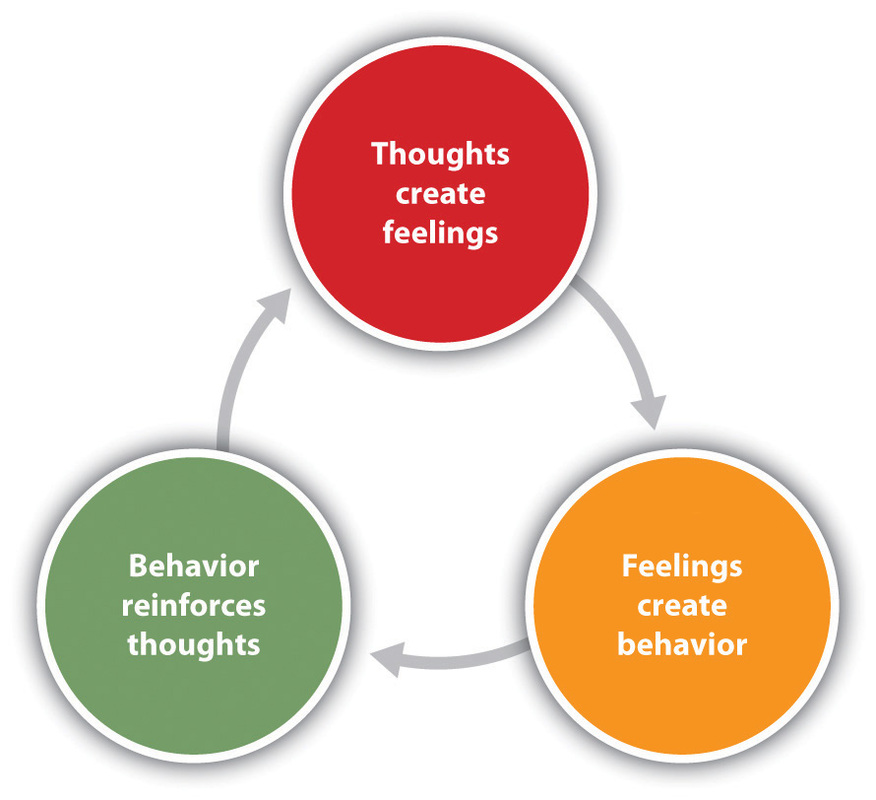
CBT emphasises that it is not necessarily the situation that causes a person's emotional distress, but rather it is the person's perception or view of that event or situation that leads to this. CBT works by learning how to both challenge negative thoughts and how to change unhelpful behaviours, subsequently breaking patterns of self-fulfilling emotional problems.
Pros:
- Short-term structured therapy designed for specific issues.
- As effective as medication for certain mood disorders.
- Lots of research studies showing positive results.
Cons:
- Not as effective for complex issues.
- Does not explore underlying issues or root causes.
- Lots of 'homework' and dependent on patients' discipline and willpower
Selected info taken from
Psychoanalysis and psychodynamic therapy - See also Transactional Analysis.
Pros:
- An long and established history of being recognized therapy.
- Aims to address root causes of psychological issues.
- Used for many different conditions, traumas, and some physical health issues.
- Accredited Psychoanalytic therapists undergo extensive training.
Cons:
- Psychoanalytic therapy can take place for years and become very expensive.
- Mixed results of long-term benefits.
- Recalling traumatic events can be distressing.
- Risk that the therapist's interpretation can be incorrect, which can be damaging.
Information taken from
What it is
Psychoanalysis assumes that a person's thoughts, feelings, and behaviors happen as a result of repressed emotions and unconscious drives. These can originate at different levels, such as primal instincts of survival or responding to what a person is carrying in their conscience due to upbringing around family, peers, and wider society.
Psychoanalysis assumes that a person's thoughts, feelings, and behaviors happen as a result of repressed emotions and unconscious drives. These can originate at different levels, such as primal instincts of survival or responding to what a person is carrying in their conscience due to upbringing around family, peers, and wider society.
Therapy works as part of a relationship with the therapist, where the therapist helps identify what kinds of unexpressed emotions a person is projecting onto them outside of their own awareness. They help the person confront these emotions and responses and work through potential protective defense mechanisms within the therapeutic relationship.
Psychoanalysis and psychodynamic therapy are mostly the same except psychanalysis appointments are more frequent and psychodynamic sessions do not involve lying on a couch.
Psychoanalysis and psychodynamic therapy are mostly the same except psychanalysis appointments are more frequent and psychodynamic sessions do not involve lying on a couch.
Pros:
- An long and established history of being recognized therapy.
- Aims to address root causes of psychological issues.
- Used for many different conditions, traumas, and some physical health issues.
- Accredited Psychoanalytic therapists undergo extensive training.
Cons:
- Psychoanalytic therapy can take place for years and become very expensive.
- Mixed results of long-term benefits.
- Recalling traumatic events can be distressing.
- Risk that the therapist's interpretation can be incorrect, which can be damaging.
Information taken from
Humanistic psychology
What it is
There are different kinds of humanistic psychology but the central principle is that people are inherently good and it takes an optimistic view of people and their capacity to grow and evolve. People are given an empathetic space for self-exploration and understanding their inner world.
There are different types of humanistic schools:
1. Client-centered therapy Where the therapist does not analyse or diagnose or give specific advice but gives a person a place in which they are 100% accepted and can explore their own thoughts and feelings - therapist acts as more of a helper and an equal than an authority figure.
Therapy focuses on promoting authenticity and autonomy by building self-trust, confidence, and empowerment with the support of the therapist - giving a safe space for long-term internal change in a positive environment.
2. Gestalt Therapy which uses techniques like role-playing situations to trigger different emotions to work through and work with.
3. Existential Therapy where a person can explore the meaning of their life and take responsibility for different elements of their life
Pros:
Used for lots of different conditions including anxiety, depression, schizophrenia, addiction, and interpersonal issues and trauma.
Evidence-based and as effective as other therapies.
Good for people who want open and flexible therapy.
Not focused on talking about traumas and is based in the present.
Cons:
Therapy can be client-led which might not be for everyone.
Not focused on fixing specific issues - it's more about treating the person holistically.
What it is
There are different kinds of humanistic psychology but the central principle is that people are inherently good and it takes an optimistic view of people and their capacity to grow and evolve. People are given an empathetic space for self-exploration and understanding their inner world.
There are different types of humanistic schools:
1. Client-centered therapy Where the therapist does not analyse or diagnose or give specific advice but gives a person a place in which they are 100% accepted and can explore their own thoughts and feelings - therapist acts as more of a helper and an equal than an authority figure.
Therapy focuses on promoting authenticity and autonomy by building self-trust, confidence, and empowerment with the support of the therapist - giving a safe space for long-term internal change in a positive environment.
2. Gestalt Therapy which uses techniques like role-playing situations to trigger different emotions to work through and work with.
3. Existential Therapy where a person can explore the meaning of their life and take responsibility for different elements of their life
Pros:
Used for lots of different conditions including anxiety, depression, schizophrenia, addiction, and interpersonal issues and trauma.
Evidence-based and as effective as other therapies.
Good for people who want open and flexible therapy.
Not focused on talking about traumas and is based in the present.
Cons:
Therapy can be client-led which might not be for everyone.
Not focused on fixing specific issues - it's more about treating the person holistically.
Info taken from

Understanding Humanistic Therapy
Humanistic therapy is centered around individuality and finding your true self. Discover the core principles of this approach and find out what to expect.
Integrative therapy:
What it is
Specific therapy approaches have their own strengths and weaknesses, which can limit the issues that can be treated. For that reason, some therapists will combine different elements from each of the above models to tailor treatment to each individual person and issue. For example, a therapist can use a client-centered relationship (humanistic) to help give information and support for behavior change (CBT) while exploring the root causes of an issue (psychoanalysis).
So, if the above models are not attractive because they all feel as though they are each missing something, then an integrative therapist/approach where parts of each of them are used might be worth looking into.
Some integrative therapists might also include bodywork, which will be explained below.
Pros:
- Allows flexibility to treat more people.
- Different issues can be treated from different perspectives without restrictions and limitations of one model.
- Allows therapists to tailor treatments to individuals rather than cookie-cutting their issues into one model or treatment method.
Cons:
- Quality of therapy depends on the skill of the therapist to be able to combine the different models effectively.
- Different models are diluted.
- Might be confusing for the client
Info taken from:

 www.verywellmind.com
www.verywellmind.com
What it is
Specific therapy approaches have their own strengths and weaknesses, which can limit the issues that can be treated. For that reason, some therapists will combine different elements from each of the above models to tailor treatment to each individual person and issue. For example, a therapist can use a client-centered relationship (humanistic) to help give information and support for behavior change (CBT) while exploring the root causes of an issue (psychoanalysis).
So, if the above models are not attractive because they all feel as though they are each missing something, then an integrative therapist/approach where parts of each of them are used might be worth looking into.
Some integrative therapists might also include bodywork, which will be explained below.
Pros:
- Allows flexibility to treat more people.
- Different issues can be treated from different perspectives without restrictions and limitations of one model.
- Allows therapists to tailor treatments to individuals rather than cookie-cutting their issues into one model or treatment method.
Cons:
- Quality of therapy depends on the skill of the therapist to be able to combine the different models effectively.
- Different models are diluted.
- Might be confusing for the client
Info taken from:

How Integrative Therapy Works
Integrative therapy combines psychotherapy techniques based on an individual's needs. Learn more about how integrative therapy works.
'Next Generation" Psychotherapy Approaches:
These are therapies which take components from the core traditional therapy approaches in tailored ways, often for specific types of problems
Transactional analysis (TA):
Info taken from:
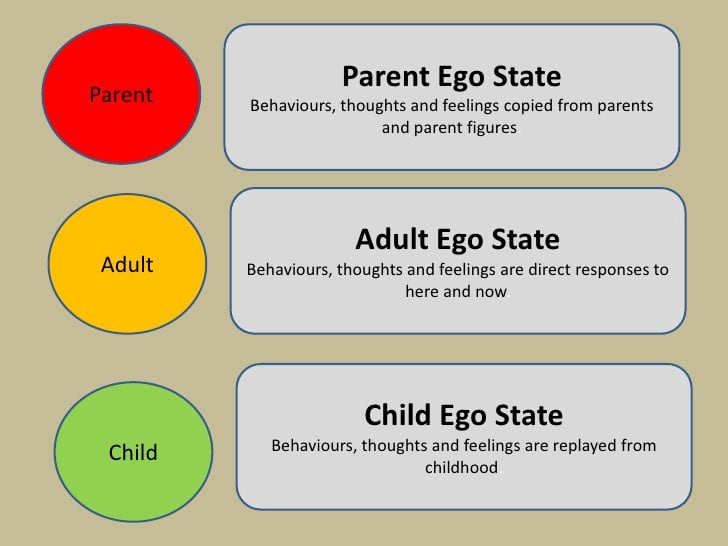
 www.simplypsychology.org
www.simplypsychology.org
Transactional analysis is rooted in psychoanalysis and focuses on how a person interacts with others and how people relate to each other across different situations and circumstances. The theory also includes how people trigger certain responses in each other, essentially ping-ponging off of each other emotionally, and is designed to identify and resolve dysfunction that might be happening.
TA assumes that throughout childhood people develop a 'life script' which develops how they emotionally interact with people and is carried into adulthood. When interacting with someone as an adult, a person is either operating emotionally from their parent self (copying what their parents used to do), their adult self (balanced mature self in the present), or their child self (replaying unresolved childhood emotions in certain situations or dynamics).
The theory also assumes that people will switch between these states depending on who they are interacting with and what kind of situation it is. Also, each individual might be operating from a different state in a given interaction, and people can trigger any of these emotional states in each other.
The aim is to strengthen a person's 'adult state' and have them operating from an emotionally healthy place. Transactional analysis can either be a dedicated standalone therapy or a tool that a psychotherapist can work with during treatment and can occur one on one or in couples/groups.
Pros:
- Reasonably basic and structured concept, which can make it easier for individuals to understand and participate in treatment.
- Good for relationships of different kinds.
- Beneficial for learning better communication skills and putting them into practice in a healthy way.
Cons:
- Individual in treatment needs to have sufficient self-awareness or willingness to participate.
- The individual will need to be ready to take personal responsibility for their learning and be willing to work on the process.
TA assumes that throughout childhood people develop a 'life script' which develops how they emotionally interact with people and is carried into adulthood. When interacting with someone as an adult, a person is either operating emotionally from their parent self (copying what their parents used to do), their adult self (balanced mature self in the present), or their child self (replaying unresolved childhood emotions in certain situations or dynamics).
The theory also assumes that people will switch between these states depending on who they are interacting with and what kind of situation it is. Also, each individual might be operating from a different state in a given interaction, and people can trigger any of these emotional states in each other.
The aim is to strengthen a person's 'adult state' and have them operating from an emotionally healthy place. Transactional analysis can either be a dedicated standalone therapy or a tool that a psychotherapist can work with during treatment and can occur one on one or in couples/groups.
Pros:
- Reasonably basic and structured concept, which can make it easier for individuals to understand and participate in treatment.
- Good for relationships of different kinds.
- Beneficial for learning better communication skills and putting them into practice in a healthy way.
Cons:
- Individual in treatment needs to have sufficient self-awareness or willingness to participate.
- The individual will need to be ready to take personal responsibility for their learning and be willing to work on the process.
Info taken from:

Transactional Analysis Theory & Therapy: Eric Berne
Transactional Analysis (TA) is a psychoanalytic theory and method of therapy developed by Eric Berne during the 1950s. Transactions refer to the communication exchanges between people.
 www.simplypsychology.org
www.simplypsychology.org
Internal Family Systems
Pros:
Promising results for PTSD and childhood trauma
Addresses root causes of issues and explains current behaviours
Has a framework to follow which gives some structure
Cons:
Benefits can be limited when living in unsupportive environment
Not beneficial for people with Schizophrenia, dementia or delusions
More research needed
Info taken from
 ifs-institute.com
ifs-institute.com
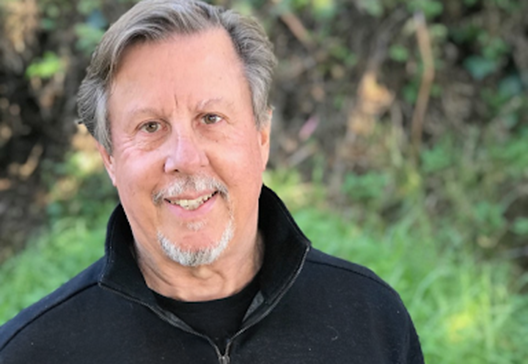
 www.bps.org.uk
www.bps.org.uk
IFS was created in the 1980s and is about recognizing how different dynamics with different people from developmental years can contribute to a range of thoughts and feelings that a person will have within themselves as an adult and helps them understand their internal narrative.
Taken from their website:
"IFS® is a transformative tool that conceives every human being as a system of protective and wounded inner parts led by a core Self. IFS believes the mind is naturally multiple and that is a good thing. Just like members of a family, inner parts are forced from their valuable states into extreme roles within us. Self is in everyone. It can't be damaged. It knows how to heal.
IFS® is frequently used as an evidence-based psychotherapy, helping people heal by accessing and healing their protective and wounded inner parts. IFS® creates inner and outer connectedness by helping people first access their Self and, from that core, come to understand and heal their parts.
The mistake that most of psychotherapy and wider culture in general has made is to try and fight these different parts, to ignore them or block them or get rid of them in some way. And these parts will fight to the end of their ability to protect you. And in many cases I mean 'the end'. In the eating disorder field, for example, the status quo is still to pit the client against the eating disorder and to 'beat' the eating disorder and that's partly why so many anorexics die, because eating disorder will beat you to protect you"
Examples of the 4 categories of different 'parts - 1 central and 3 protective - and how they show up:

Taken from their website:
"IFS® is a transformative tool that conceives every human being as a system of protective and wounded inner parts led by a core Self. IFS believes the mind is naturally multiple and that is a good thing. Just like members of a family, inner parts are forced from their valuable states into extreme roles within us. Self is in everyone. It can't be damaged. It knows how to heal.
IFS® is frequently used as an evidence-based psychotherapy, helping people heal by accessing and healing their protective and wounded inner parts. IFS® creates inner and outer connectedness by helping people first access their Self and, from that core, come to understand and heal their parts.
The mistake that most of psychotherapy and wider culture in general has made is to try and fight these different parts, to ignore them or block them or get rid of them in some way. And these parts will fight to the end of their ability to protect you. And in many cases I mean 'the end'. In the eating disorder field, for example, the status quo is still to pit the client against the eating disorder and to 'beat' the eating disorder and that's partly why so many anorexics die, because eating disorder will beat you to protect you"
Examples of the 4 categories of different 'parts - 1 central and 3 protective - and how they show up:

Pros:
Promising results for PTSD and childhood trauma
Addresses root causes of issues and explains current behaviours
Has a framework to follow which gives some structure
Cons:
Benefits can be limited when living in unsupportive environment
Not beneficial for people with Schizophrenia, dementia or delusions
More research needed
Info taken from
About Us | IFS Institute
The Center for Self Leadership is now…IFS Institute In 2000, Richard Schwartz founded The Center for Self Leadership as a training organization for the Internal

'These parts will fight to the end to protect you' | BPS
Kal Kseib meets Dr Richard Schwartz, founder of Internal Family Systems therapy.
Schema Therapy
Schema therapy contains elements from CBT, Gestatlt Therapy and Psychotherapy, considering the importance of a healthy relationship and how some needs were unmet in childhood, and combines meeting some of these needs while working on beliefs that childhood issues might have created.
A 'Schema' is a mental shortcut for grouping up information that people use to understand and respond to the world. For example, a child will think of a dog and might think 'furry animal with four legs and a tail'. As they grow and learn, they will also create new schemas and evolve existing ones, e.g., they will learn that other animals have four legs and a tail, and they will create schemas for these animals while developing information that they have stored for dogs.
Schemas can be about objects, people, places, events/activities, and also ourselves and our roles within immediate and wider social circles. While they can be useful for storing lots of information, they can also be simplistic and perpetuate stereotypes which can create awkward situations but also self-limiting beliefs and behaviors.
Schema therapy helps people to learn to recognize which schemas and problematic coping styles affect them the most, understand the origins, and learn how to make lasting changes.
Structured assignments are worked on outside sessions that help clients to continually confront their negative beliefs. In each session, the client works with their therapist to identify when their unhealthy patterns are repeating, and are 'empathically confronted' with the reasons for change. The therapist provides a partial antidote to meeting some of the client's needs that may not have been met in their childhood.
Pros:
- Combines three very different therapy styles which compensate for the individual limits of each.
- Showing good results for personality disorders and Anxiety, ODC & PTSD which can often be difficult to treat.
- Considers the root causes of the past as well as structured approaches for the present and future.
- Low dropout rates.
Cons:
- Can take a long time.
- Could be difficult for people who do not want to talk about the past.
- Focuses on unmet needs from childhood but not all mental health issues are rooted in childhood.
- Still reasonably new.
Schema therapy contains elements from CBT, Gestatlt Therapy and Psychotherapy, considering the importance of a healthy relationship and how some needs were unmet in childhood, and combines meeting some of these needs while working on beliefs that childhood issues might have created.
A 'Schema' is a mental shortcut for grouping up information that people use to understand and respond to the world. For example, a child will think of a dog and might think 'furry animal with four legs and a tail'. As they grow and learn, they will also create new schemas and evolve existing ones, e.g., they will learn that other animals have four legs and a tail, and they will create schemas for these animals while developing information that they have stored for dogs.
Schemas can be about objects, people, places, events/activities, and also ourselves and our roles within immediate and wider social circles. While they can be useful for storing lots of information, they can also be simplistic and perpetuate stereotypes which can create awkward situations but also self-limiting beliefs and behaviors.
Schema therapy helps people to learn to recognize which schemas and problematic coping styles affect them the most, understand the origins, and learn how to make lasting changes.
Structured assignments are worked on outside sessions that help clients to continually confront their negative beliefs. In each session, the client works with their therapist to identify when their unhealthy patterns are repeating, and are 'empathically confronted' with the reasons for change. The therapist provides a partial antidote to meeting some of the client's needs that may not have been met in their childhood.
Pros:
- Combines three very different therapy styles which compensate for the individual limits of each.
- Showing good results for personality disorders and Anxiety, ODC & PTSD which can often be difficult to treat.
- Considers the root causes of the past as well as structured approaches for the present and future.
- Low dropout rates.
Cons:
- Can take a long time.
- Could be difficult for people who do not want to talk about the past.
- Focuses on unmet needs from childhood but not all mental health issues are rooted in childhood.
- Still reasonably new.
Info taken from

What Is a Schema in Psychology? Definition and Examples
A schema is a mental shortcut that helps us organize and understand information, like a mental map for how to think about and react to things.
Understanding Schema – The Schema Therapy Institute

The Advantages and Disadvantages of Schema Therapy - Mental Health General
Schema Therapy is a type of talking therapy that can be used in the treatment of some mental health conditions. Schema Therapy is known for combining elements from a range of different therapy types to create one solidified form of therapy. Despite combining several areas into one, Schema...
 www.mentalhealthgeneral.com
www.mentalhealthgeneral.com
But I tried traditional therapy and it didn't work - now what?
Sometimes traditional talking therapies do not work - this could be because the type of talking therapy was the wrong fit or that issues are too deep for 'talking things through and changing thoughts and behaviour' to fix. Some people feel they are being taught to 'gaslight themselves'. There will be different reasons, especially for trauma-related disorders, but the article below might give one explanation which could be helpful & explain why a different approach might be worth trying.
Why talking traditional therapy does not always work - article
Also according to a 2022 article, "(SSRIs) are U.S. Food and Drug Administration (FDA)-approved first-line therapeutics for the treatment of PTSD. It is estimated that 40-60% of patients treated with these compounds do not experience any response. Although trauma-focused psychotherapies, such as prolonged exposure and cognitive behavioral therapy, are considered the most effective treatments for PTSD, many people do not respond well to these treatments or continue to have significant symptoms, and dropout rates are high. Poor outcomes from treatment are often associated with comorbid conditions such as childhood trauma, alcohol and substance abuse, depression, and dissociation. Therefore, it is essential to identify a beneficial treatment for those typically resistant to treatment."
Mindfulness-Based Therapies
An additional approach incorporated into therapy in the last 20-30 years or so is adding mindfulness and tools-based methods. These do not involve as much talking and are course-based, designed instead to teach people better coping skills depending on their issues. These methods are often taught in online or physical group classes. Some skills might just help in the moment but others can, while learned and used consistently, cumulatively help to manage, process and heal certain issues over time. These methods have been referred to as 'third wave' by some, and include the following:
Note: There are ACT worksheets available on the Worksheets and Workbooks Megathread and also a free of charge short introductory course here
What It Is
Acceptance and Commitment Therapy (ACT) can be described as similar to CBT but involves leaning into emotions associated with difficult thoughts using mindfulness rather than just reframing or rethinking those thoughts. ACT techniques used then help to allow a person to adjust their behaviour and move towards things that are more fulfilling and meaningful to them.
Gently connecting to emotions that exist underneath thoughts helps to develop resilience and 'psychological flexibility,' as opposed to just blocking out thoughts and feelings and their associated situations because they are uncomfortable.
The objective of ACT is not elimination of difficult feelings; rather, it is to be present with what life brings and to 'move toward valued behavior.' Acceptance and commitment therapy invites people to open up to unpleasant feelings, learn not to overreact to them, and not avoid situations where they are invoked, leading to less distress and lasting change.
Pros:
- Lots of scientific backing
- Providing tools to help people connect to and process their authentic emotions in the moment rather than just changing their thinking.
- Active and practical self-acceptance.
Cons:
- Disputes in scientific community over whether ACT is better than or merely comparable to CBT
Info taken from

 www.verywellmind.com
www.verywellmind.com
 en.m.wikipedia.org
en.m.wikipedia.org
Why talking traditional therapy does not always work - article
Also according to a 2022 article, "(SSRIs) are U.S. Food and Drug Administration (FDA)-approved first-line therapeutics for the treatment of PTSD. It is estimated that 40-60% of patients treated with these compounds do not experience any response. Although trauma-focused psychotherapies, such as prolonged exposure and cognitive behavioral therapy, are considered the most effective treatments for PTSD, many people do not respond well to these treatments or continue to have significant symptoms, and dropout rates are high. Poor outcomes from treatment are often associated with comorbid conditions such as childhood trauma, alcohol and substance abuse, depression, and dissociation. Therefore, it is essential to identify a beneficial treatment for those typically resistant to treatment."
Mindfulness-Based Therapies
An additional approach incorporated into therapy in the last 20-30 years or so is adding mindfulness and tools-based methods. These do not involve as much talking and are course-based, designed instead to teach people better coping skills depending on their issues. These methods are often taught in online or physical group classes. Some skills might just help in the moment but others can, while learned and used consistently, cumulatively help to manage, process and heal certain issues over time. These methods have been referred to as 'third wave' by some, and include the following:
Mindfulness
In short, mindfulness is a tool or a skill, and being mindful just means being conscious or aware of the present. A central concept of mindfulness is that thoughts and feelings are distinct from each other even if they can influence each other. E.g. thoughts happen in your head and feelings happen through bodily sensations — you cannot 'think' stroking on your arm; you can only 'feel' it and these sensations are where all present experiences happen, and mindfulness can help a person be aware of both.
There are different types of mindfulness, but they generally aim to disconnect from thought patterns which people can become wrapped up in without realising it. Like when you get 'lost in your head' or find out that you have been ranting to yourself or living a scenario out in your imagination before realizing that that's what you're doing.
Thoughts will generally be in the future or the past, or even just negative self-talkor imaginary situations, because they keep a person's mind in 'thinking' mode and away from emotions and experiences that are happening in the present. In other words, the mind often uses thoughts to distract oneself from uncomfortable emotions. Mindfulness helps a person recognise when that's happening and offers the opportunity to either connect to these emotions or choose something more productive than going around in mind-circles.
Additionally, awareness of emotions and bodily sensations can also help to stop a person losing control, or knowing in good time when they are reaching their physical, mental or emotional limits and need to do something different, like take a break or eat.
Resources
There are lots of different mindfulness resources available online, but a good place to start would be a guided body-scan meditation which helps make you more aware of how to check in with what is happening in your mind and body. There are also some mindfulness worksheets in the Mental Health Worksheets & Booklets Megathread.
Body Scan Meditation
Also for people who want some professional guidance there are free live guided mindfulness sessions twice daily Mon-Fri online at Oxfordmindfulness.org. They are based in the UK but hopefully 1 of them should be at a manageable time given different timezones.
In short, mindfulness is a tool or a skill, and being mindful just means being conscious or aware of the present. A central concept of mindfulness is that thoughts and feelings are distinct from each other even if they can influence each other. E.g. thoughts happen in your head and feelings happen through bodily sensations — you cannot 'think' stroking on your arm; you can only 'feel' it and these sensations are where all present experiences happen, and mindfulness can help a person be aware of both.
There are different types of mindfulness, but they generally aim to disconnect from thought patterns which people can become wrapped up in without realising it. Like when you get 'lost in your head' or find out that you have been ranting to yourself or living a scenario out in your imagination before realizing that that's what you're doing.
Thoughts will generally be in the future or the past, or even just negative self-talkor imaginary situations, because they keep a person's mind in 'thinking' mode and away from emotions and experiences that are happening in the present. In other words, the mind often uses thoughts to distract oneself from uncomfortable emotions. Mindfulness helps a person recognise when that's happening and offers the opportunity to either connect to these emotions or choose something more productive than going around in mind-circles.
Additionally, awareness of emotions and bodily sensations can also help to stop a person losing control, or knowing in good time when they are reaching their physical, mental or emotional limits and need to do something different, like take a break or eat.
Resources
There are lots of different mindfulness resources available online, but a good place to start would be a guided body-scan meditation which helps make you more aware of how to check in with what is happening in your mind and body. There are also some mindfulness worksheets in the Mental Health Worksheets & Booklets Megathread.
Body Scan Meditation
Also for people who want some professional guidance there are free live guided mindfulness sessions twice daily Mon-Fri online at Oxfordmindfulness.org. They are based in the UK but hopefully 1 of them should be at a manageable time given different timezones.
Mindfulness Based Cognitive Therapy
Pros
Endorsed by The UK National Institute of Clinical Excellence (NICE)
Shown to be similarly effective as antidepressants
Short-term course teaches skills that can be used for a lifetime
Evidence has shown useful for people with reoccurring depressive episodes
Cons
Does not explore root causes
Less effective for people whose depression whose episodes are not re-occuring
Potential risks for people with psychosis and PTSD or more severe mental health issues - discuss with practitioner
Info taken from
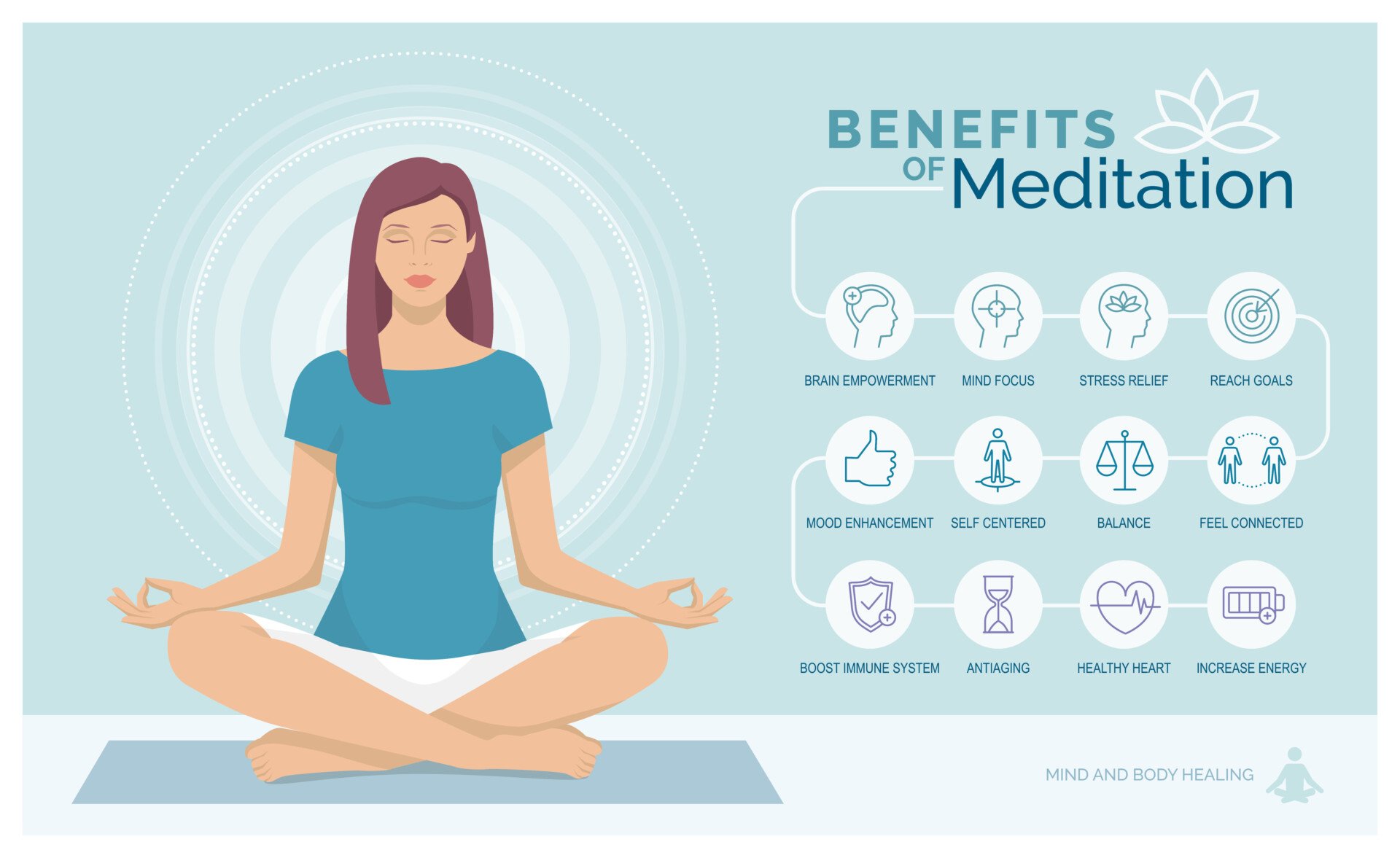
 www.simplypsychology.org
www.simplypsychology.org
Mindfulness-Based Cognitive Therapy (MBCT) is designed to help people who suffer repeated bouts of depression and chronic unhappiness. It combines the ideas of cognitive therapy with meditative practices to help identify when relapses of depression might start, subsequently helping to prevent relapses taking hold and escalating. While CBT encourages people to focus on their thoughts, MBCT encourges people to be aware of thoughts along with their feelings & environment. Techniques can also be used to help lift people out of some depressions. MBCT skills are generally taught as part of a 6 or 8 week course and skills learned during the course can be put into practise in the long term.
The UK National Institute of Clinical Excellence (NICE) has recently endorsed MBCT as an effective treatment for prevention of relapse. Research has shown that people who have been clinically depressed 3 or more times (sometimes for twenty years or more) find that taking the program and learning these skills helps to considerably reduce their chances that depression will return. The evidence from two randomized clinical trials of MBCT indicates that it reduces rates of relapse by 50% among patients who suffer from recurrent depression.
The UK National Institute of Clinical Excellence (NICE) has recently endorsed MBCT as an effective treatment for prevention of relapse. Research has shown that people who have been clinically depressed 3 or more times (sometimes for twenty years or more) find that taking the program and learning these skills helps to considerably reduce their chances that depression will return. The evidence from two randomized clinical trials of MBCT indicates that it reduces rates of relapse by 50% among patients who suffer from recurrent depression.
Pros
Endorsed by The UK National Institute of Clinical Excellence (NICE)
Shown to be similarly effective as antidepressants
Short-term course teaches skills that can be used for a lifetime
Evidence has shown useful for people with reoccurring depressive episodes
Cons
Does not explore root causes
Less effective for people whose depression whose episodes are not re-occuring
Potential risks for people with psychosis and PTSD or more severe mental health issues - discuss with practitioner
Info taken from

What Is Mindfulness-Based Cognitive Therapy (MBCT)?
Mindfulness-based cognitive therapy (MBCT) combines elements of mindfulness practice and cognitive behavioral therapy to help individuals develop greater awareness and acceptance of their thoughts, emotions, and experiences in order to cultivate resilience and prevent relapse in depression and...
 www.simplypsychology.org
www.simplypsychology.org
Dialectical Behaviour Therapy
Dialectical behavior therapy (DBT) is a psychotherapy that began with efforts to treat personality disorders, interpersonal conflicts and people who experience emotions and urges very intensely. DBT is used in treating mood disorders and suicidal ideation as well as for changing behavioral patterns such as self-harm and substance use. This is achieved by giving individuals different resources to cope with life and manage intense emotional episodes.
"Dialectical" means combining opposite ideas. DBT focuses on helping people accept the reality of their lives and their behaviours, as well as using tools to them learn to change them.
Modules studied in DBT are as follows

Pros
Info taken from
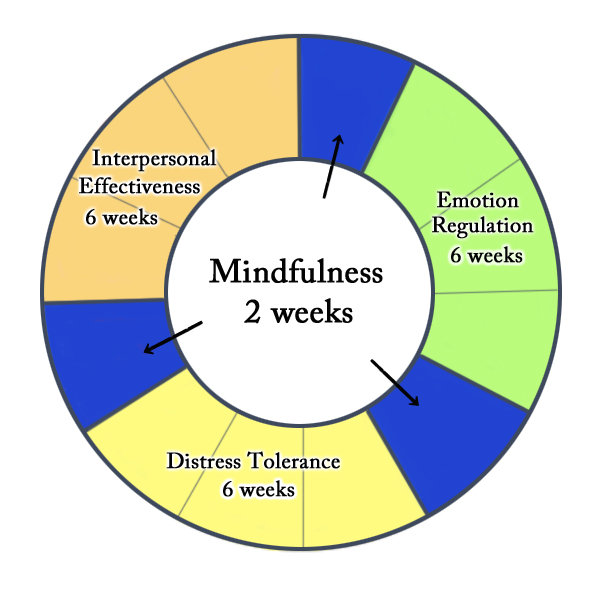
 en.m.wikipedia.org
en.m.wikipedia.org

 my.clevelandclinic.org
my.clevelandclinic.org
Some DBT Resources and introductory course are available on Mental Health Worksheets and Workbooks Megathread
Dialectical behavior therapy (DBT) is a psychotherapy that began with efforts to treat personality disorders, interpersonal conflicts and people who experience emotions and urges very intensely. DBT is used in treating mood disorders and suicidal ideation as well as for changing behavioral patterns such as self-harm and substance use. This is achieved by giving individuals different resources to cope with life and manage intense emotional episodes.
"Dialectical" means combining opposite ideas. DBT focuses on helping people accept the reality of their lives and their behaviours, as well as using tools to them learn to change them.
Modules studied in DBT are as follows

Pros
- Evidence shows less self-harm behavior and anger.
- Fewer days of inpatient hospitalization.
- Less drug and alcohol misuse.
- Improved depressive symptoms
- Focused on the present
- Does not explore root causes
- Often conducted in groups which is not for everyone
- Can be challenging and takes discipline and commitment
Info taken from

Dialectical behavior therapy - Wikipedia
Dialectical Behavior Therapy (DBT): What It Is & Purpose
Dialectical behavior therapy (DBT) is a type of talk therapy for people who experience emotions very intensely, including those with borderline personality disorder.
Some DBT Resources and introductory course are available on Mental Health Worksheets and Workbooks Megathread
Note: There are ACT worksheets available on the Worksheets and Workbooks Megathread and also a free of charge short introductory course here
What It Is
Acceptance and Commitment Therapy (ACT) can be described as similar to CBT but involves leaning into emotions associated with difficult thoughts using mindfulness rather than just reframing or rethinking those thoughts. ACT techniques used then help to allow a person to adjust their behaviour and move towards things that are more fulfilling and meaningful to them.
Gently connecting to emotions that exist underneath thoughts helps to develop resilience and 'psychological flexibility,' as opposed to just blocking out thoughts and feelings and their associated situations because they are uncomfortable.
The objective of ACT is not elimination of difficult feelings; rather, it is to be present with what life brings and to 'move toward valued behavior.' Acceptance and commitment therapy invites people to open up to unpleasant feelings, learn not to overreact to them, and not avoid situations where they are invoked, leading to less distress and lasting change.
Pros:
- Lots of scientific backing
- Providing tools to help people connect to and process their authentic emotions in the moment rather than just changing their thinking.
- Active and practical self-acceptance.
Cons:
- Disputes in scientific community over whether ACT is better than or merely comparable to CBT
Info taken from

What Is Acceptance and Commitment Therapy (ACT)?
Acceptance and commitment therapy (ACT) helps you accept your thoughts and feelings while committing to living according to your values. Learn how ACT therapy works.
Acceptance and commitment therapy - Wikipedia
Trauma-Specific Technique/Process-based Therapies
EMDR
What is it?
Pros:
- Research has observed quicker results than standard talking therapies.
- No need to talk about specific traumatic events in detail.
- Scientific backing for PTSD where therapy is conducted by experienced PTSD therapists.
Cons:
- There are reports of bias in favor of many EMDR studies.
- Emergence of memories and emotions could be overwhelming for some people, which could cause distress.
- There are anecdotal reports of being destabilized from EMDR.
Info taken from
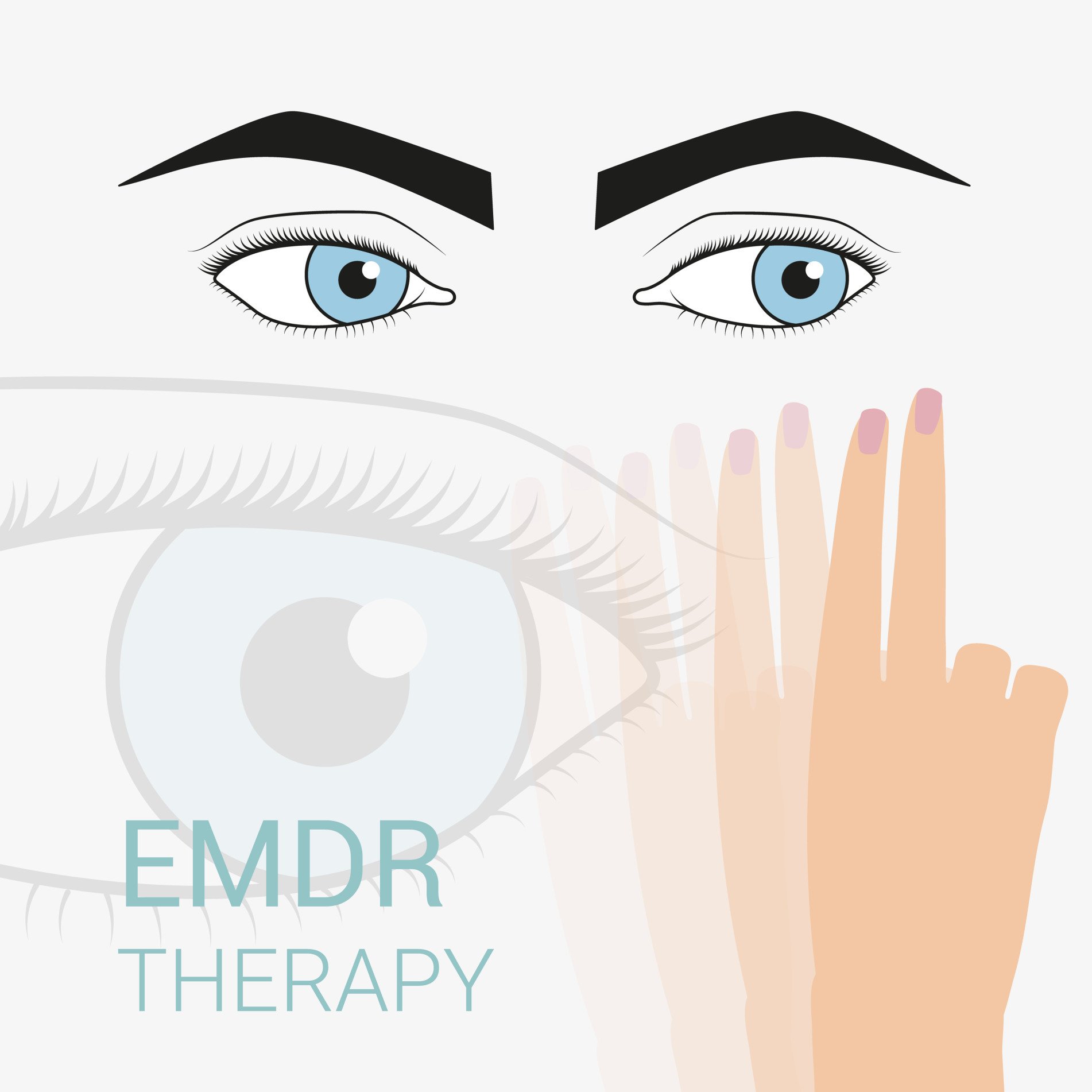
 www.simplypsychology.org
www.simplypsychology.org
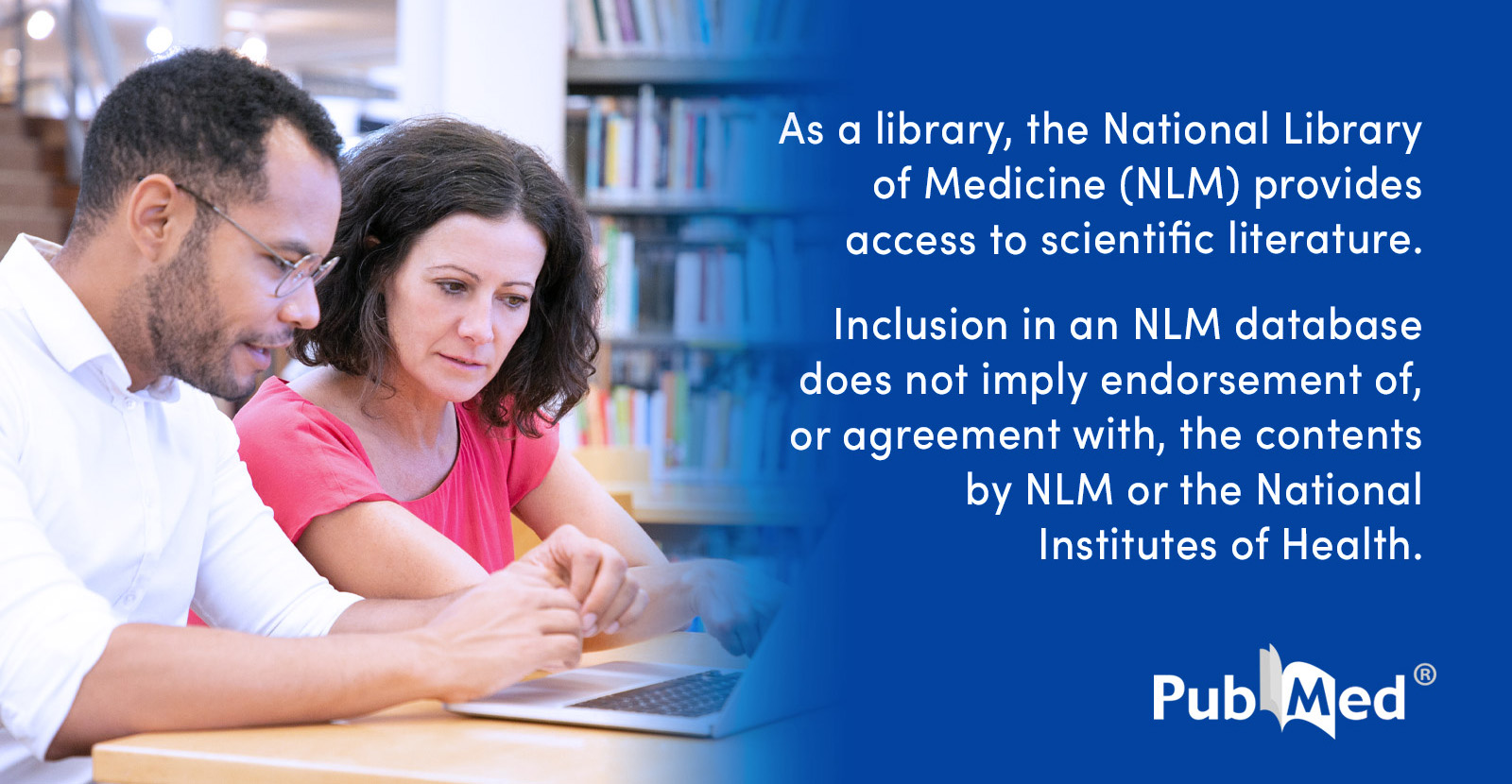
 pubmed.ncbi.nlm.nih.gov
pubmed.ncbi.nlm.nih.gov
What is it?
Eye Movement Desensitisation and Reprocessing is a technique used for processing traumatic memories.
EMDR helps patients process and reprocess traumatic memories and their associated emotions, leading to a reduction in distress and an improvement in overall well-being.
Using a combination of talk therapy and bilateral stimulation, EMDR can help individuals overcome a wide range of mental health challenges, including posttraumatic stress disorder (PTSD), anxiety, depression, dissociation, and phobias.
Bilateral stimulation basically means involving/accessing both sides or hemispheres of the brain, which is considered more effective than just talking about trauma. Trauma is often held in deeper parts of the brain than talking alone can access. This is often achieved through the use of specific eye movements, but also other techniques which help to access areas where trauma is stored.
EMDR helps patients process and reprocess traumatic memories and their associated emotions, leading to a reduction in distress and an improvement in overall well-being.
Using a combination of talk therapy and bilateral stimulation, EMDR can help individuals overcome a wide range of mental health challenges, including posttraumatic stress disorder (PTSD), anxiety, depression, dissociation, and phobias.
Bilateral stimulation basically means involving/accessing both sides or hemispheres of the brain, which is considered more effective than just talking about trauma. Trauma is often held in deeper parts of the brain than talking alone can access. This is often achieved through the use of specific eye movements, but also other techniques which help to access areas where trauma is stored.
Pros:
- Research has observed quicker results than standard talking therapies.
- No need to talk about specific traumatic events in detail.
- Scientific backing for PTSD where therapy is conducted by experienced PTSD therapists.
Cons:
- There are reports of bias in favor of many EMDR studies.
- Emergence of memories and emotions could be overwhelming for some people, which could cause distress.
- There are anecdotal reports of being destabilized from EMDR.
Info taken from

About EMDR Therapy: The 8 Phases of EMDR
EMDR therapy is an eight-phase treatment. Eye movements (or other bilateral stimulation) are used during part four of the treatment.
 www.simplypsychology.org
www.simplypsychology.org

Efficacy of eye-movement desensitization and reprocessing for patients with posttraumatic-stress disorder: a meta-analysis of randomized controlled trials - PubMed
This study confirmed that EMDR therapy significantly reduces the symptoms of PTSD, depression, anxiety, and subjective distress in PTSD patients. The subgroup analysis indicated that a treatment duration of more than 60 min per session was a major contributing factor in the amelioration of...
What It Is
Pros
No need to describe trauma in detail
No homework
Quick results
Used for wide range of issues as well as PTSD
Fewer sessions = less expensive
Cons
Relatively new - sparse long-term/follow-up research
Info taken from
Accelerated resolution therapy (ART) is a relatively new treatment for posttraumatic stress disorder (PTSD) that was developed in 2008. It is derived from Eye-Movement Desensitization and Reprocessing (EMDR) therapy, but according to its creator, it is more directive, can be administered in a shorter amount of time, and is easier to learn. ART-based therapy assists patients in creating new images of past trauma they have experienced, using eye movements to enhance this process and increase relaxation. The therapy usually takes 1 to 5 one-hour sessions, with an average of 3.7 sessions.
Pros
No need to describe trauma in detail
No homework
Quick results
Used for wide range of issues as well as PTSD
Fewer sessions = less expensive
Cons
Relatively new - sparse long-term/follow-up research
Info taken from
Emotional Freedom Technique (EFT)
What it is
Pros
- Quick, simple, and easy to learn & low budget.
- Good results in clinical studies.
- Can be used with a therapist or alone, and during times of anxiety and distress.
- Potential good physical distraction technique for people who struggle with coping strategies that require psychological discipline such as mindfulness or thought reframing.
Cons
- Considered 'pseudoscience' by some, and basis in Chinese medicine can make some people skeptical.
- Risk of being considered 'too good to be true'.
Info taken from

 positivepsychology.com
positivepsychology.com
What it is
EFT, a 'bio-energetic' therapy also known as 'tapping', is described as "a brief intervention combining elements of exposure, cognitive therapy, acceptance, and somatic stimulation of acupressure points on the face and body." In short, users confront distressing thoughts, feelings, memories, and also some physical symptoms while tapping different acupressure points on the head, face, and upper body, and using phrases that help to accept emotions and speak kindly about oneself. The process is designed to help reduce the intensity of emotions by gently accepting them. In EFT, traumatic emotions are recognised as trapped energies within the body & system that can cause/exacerbate mental and some physical health issues until they are released; hence th 'bio-energetic' label. The technique has been used to help process and release difficult emotions in a gentle way.
It is a simple and easy-to-learn process which can be used with a therapist but also taught to individuals as a self-soothing technique to reduce distress. It has been used for anxiety, depression, PTSD, phobias, physical symptoms, and cravings.
It is a simple and easy-to-learn process which can be used with a therapist but also taught to individuals as a self-soothing technique to reduce distress. It has been used for anxiety, depression, PTSD, phobias, physical symptoms, and cravings.
Pros
- Quick, simple, and easy to learn & low budget.
- Good results in clinical studies.
- Can be used with a therapist or alone, and during times of anxiety and distress.
- Potential good physical distraction technique for people who struggle with coping strategies that require psychological discipline such as mindfulness or thought reframing.
Cons
- Considered 'pseudoscience' by some, and basis in Chinese medicine can make some people skeptical.
- Risk of being considered 'too good to be true'.
Info taken from

EFT Tapping: The Psychology Behind Tapping Therapy
EFT tapping is versatile as a supplement to existing therapeutic interventions.
Trauma Focused Mind-body Therapies
Moving one step further than the recognised "Healthy body =/= Healthy Mind" approach, Mind-body therapies generally agree that emotions and trauma occur in the body as well as in the mind. They often use "bottom-up", (covered in earlier article) or more "sensory" approaches to access latent emotions that are stored in the nervous system or in a feedback system between the brain and the muscles.
Different mind-body therapies have their own methods, but the aim of them all is either to generally calm down the nervous system and/or release emotions/energy that are repressed or stored.
Information about the role of the body in trauma can be found in works of Bessel Van Der Kolk, Stephen Porges, and Peter Levine, as well as others (links lead to seminal books on the topic).
A summarised review of Van Der Kolk's 'The Body Keeps The Score' has been written by user @GuessWhosBack hereDifferent mind-body therapies have their own methods, but the aim of them all is either to generally calm down the nervous system and/or release emotions/energy that are repressed or stored.
Information about the role of the body in trauma can be found in works of Bessel Van Der Kolk, Stephen Porges, and Peter Levine, as well as others (links lead to seminal books on the topic).
A further theoretical approach which underpins many mind-body therapies is Polyvagal Theory (PV), which assumes how the nervous system responds in different situations and how understanding PV can help a person to navigate what is happening in their body through their experiences. A visual example is here
NARM Therapy
What it is:
- Views symptoms as adaptive survival strategies, reducing shame and promoting self-compassion.
Cons:
- Lacks extensive empirical studies compared to therapies like CBT or EMDR, which may concern those seeking evidence-based options.
- Less suited for recent or single-event trauma, as it focuses on developmental and relational patterns.
- Effectiveness depends on the therapist's training and experience, and finding a qualified NARM therapist can be challenging and can also be a barrier to accessing therapy.
- Can take a long time, as it prioritizes deep, relational work over immediate coping strategies.
Info taken from:

 narmtraining.com
narmtraining.com

 drlaurenceheller.com
Some help summarising information from Grok AI
drlaurenceheller.com
Some help summarising information from Grok AI
What it is:
NARM therapy, or the NeuroAffective Relational Model, is a holistic mind-body psychotherapeutic approach designed to treat attachment, relational, and developmental trauma, also known as "complex trauma" (Complex-PTSD or C-PTSD). This developmentally-oriented, neuroscience-based method uses both standard top-down (thinking & talking) psychotherapy with bottom-up (physical feeling & sensing) somatic/body based approaches within a relational context. Developed by Dr. Laurence Heller over 45 years, NARM focuses on addressing the nervous system dysregulation, distortions of identity, and the interplay between the two that result from childhood and complex trauma.
In short, rather than just talking things through & giving coping strategies like some standard therapies, NARM takes parts of psychotherapy/attachment work and combines it with body/nervous system regulation to reach issues that talking can't. It helps patients to connect with others & work to resolve trauma that impacts their relationships whilst also helping to connect to their own body, senses, self & emotions that are often disconnected through trauma and results in different bodily symptoms. Rather than seeing trauma as 'psychological' or 'just a physical response', NARM holistically bridges the gaps between, and combines areas of, all of the above psychological methods explained above and the somatic methods described below. This is all done while focusing on relationships, which are both big factors in both causing and healing trauma.
Pros:
- Combining psychological, relational, and bodily methods of trauma therapy can achieve deeper results than focusing on just one area.
- Addresses complex trauma from early life, such as neglect or inconsistent caregiving, by targeting underlying patterns.
- Uses mindfulness and bodily sensations to process trauma, which can be gentler than reliving traumatic memories.In short, rather than just talking things through & giving coping strategies like some standard therapies, NARM takes parts of psychotherapy/attachment work and combines it with body/nervous system regulation to reach issues that talking can't. It helps patients to connect with others & work to resolve trauma that impacts their relationships whilst also helping to connect to their own body, senses, self & emotions that are often disconnected through trauma and results in different bodily symptoms. Rather than seeing trauma as 'psychological' or 'just a physical response', NARM holistically bridges the gaps between, and combines areas of, all of the above psychological methods explained above and the somatic methods described below. This is all done while focusing on relationships, which are both big factors in both causing and healing trauma.
Pros:
- Combining psychological, relational, and bodily methods of trauma therapy can achieve deeper results than focusing on just one area.
- Addresses complex trauma from early life, such as neglect or inconsistent caregiving, by targeting underlying patterns.
- Views symptoms as adaptive survival strategies, reducing shame and promoting self-compassion.
Cons:
- Lacks extensive empirical studies compared to therapies like CBT or EMDR, which may concern those seeking evidence-based options.
- Less suited for recent or single-event trauma, as it focuses on developmental and relational patterns.
- Effectiveness depends on the therapist's training and experience, and finding a qualified NARM therapist can be challenging and can also be a barrier to accessing therapy.
- Can take a long time, as it prioritizes deep, relational work over immediate coping strategies.
Info taken from:

What is NARM? – NARM Training Institute
 narmtraining.com
narmtraining.com

Introduction to the NeuroAffective Relational Model© [NARM]
The NeuroAffective Relational Model (NARM)© is a method of psychotherapy specifically aimed at treating attachment, relational and developmental trauma, otherwise referred to as “Complex Trauma” (C…
 drlaurenceheller.com
drlaurenceheller.com
"Trauma is not what happens to us, but what we hold inside in the absence of an empathetic witness" - Peter Levine
Somatic Experiencing
What it is:
FYI: Free introductory resources for Somatic Experiencing are available here
SE was developed in the 1970s by NASA behavioralist Peter Levine. SE's focus is not on the event that causes trauma but what happens to a person's body and nervous system during and after those events.
The word 'somatic' just means 'the body'. SE considers a traumatised person's body to be trapped in an uncompleted bodily survival response (fight/flight/freeze) to a traumatic event, effectively freezing a person physiologically in time and trapped in an arousal state, resulting in both emotional and physical symptoms including anxiety, depression, PTSD, chronic pain, and autoimmune conditions. This can happen from a single traumatic event or a series of events, including during developmental years in childhood, leaving a person with a dysregulated nervous system and in a self-reinforcing mind-body 'feedback-loop' of fear, tension and trauma.
Because trauma affects the body and mind on such a deep level, the body holds onto 'implicit' memory, also known as 'muscle memory,' of an event or combination of events. In the words of another somatic trauma specialist Bessel van der Kolk, "The Body Keeps The Score," and in the words of Peter Levine, "The failure to restore homeostasis is at the basis for the maladaptive and debilitating symptoms of trauma."
The aim of SE is to safely connect to the sensory bodily experience where emotions are held and to help create feelings of safety within the body, allowing these unfinished survival cycles to complete their processing and release energetically, facilitating nervous system regulation, homeostasis, and healing on both a psychological, emotional, and physical level
Pros
Does not involve medication and related side-effects
Effects are shown to be long lasting
Can be effective at treating issues & symptoms that 'mainstream' psychology and medicine often dismiss
Promising results for recovery of PTSD
Cons
Treatment can take a long time
Not covered by many insurances and health provisions so can be expensive
Connecting with body can be difficult or traumatising for some people
Research is mixed and more is needed
Info taken from
Somatic Experiencing
What it is:
Somatic Experiencing (SE) is holistic in that it combines psychology with physiology and evolutionary biology within the approach.
FYI: Free introductory resources for Somatic Experiencing are available here
SE was developed in the 1970s by NASA behavioralist Peter Levine. SE's focus is not on the event that causes trauma but what happens to a person's body and nervous system during and after those events.
The word 'somatic' just means 'the body'. SE considers a traumatised person's body to be trapped in an uncompleted bodily survival response (fight/flight/freeze) to a traumatic event, effectively freezing a person physiologically in time and trapped in an arousal state, resulting in both emotional and physical symptoms including anxiety, depression, PTSD, chronic pain, and autoimmune conditions. This can happen from a single traumatic event or a series of events, including during developmental years in childhood, leaving a person with a dysregulated nervous system and in a self-reinforcing mind-body 'feedback-loop' of fear, tension and trauma.
Because trauma affects the body and mind on such a deep level, the body holds onto 'implicit' memory, also known as 'muscle memory,' of an event or combination of events. In the words of another somatic trauma specialist Bessel van der Kolk, "The Body Keeps The Score," and in the words of Peter Levine, "The failure to restore homeostasis is at the basis for the maladaptive and debilitating symptoms of trauma."
The aim of SE is to safely connect to the sensory bodily experience where emotions are held and to help create feelings of safety within the body, allowing these unfinished survival cycles to complete their processing and release energetically, facilitating nervous system regulation, homeostasis, and healing on both a psychological, emotional, and physical level
Pros
Does not involve medication and related side-effects
Effects are shown to be long lasting
Can be effective at treating issues & symptoms that 'mainstream' psychology and medicine often dismiss
Promising results for recovery of PTSD
Cons
Treatment can take a long time
Not covered by many insurances and health provisions so can be expensive
Connecting with body can be difficult or traumatising for some people
Research is mixed and more is needed
Info taken from
Trauma Release Exercises (TRE)
TRE® is an innovative series of exercises that assist the body in releasing deep muscular patterns of stress, tension and trauma. The exercises safely activate a natural reflex mechanism of shaking or vibrating that releases muscular tension, calming down the nervous system. When this muscular shaking/vibrating mechanism is activated in a safe and controlled environment, the body is encouraged to return back to a state of balance
Note: TRE is for home use for managing general stress but for deeper or severe trauma it is advised to work with a qualified practitioner
Info Taken From

 traumaprevention.com
traumaprevention.com
Links to research are available on their webste but be aware of risk of bias
 traumaprevention.com
traumaprevention.com
TRE® is an innovative series of exercises that assist the body in releasing deep muscular patterns of stress, tension and trauma. The exercises safely activate a natural reflex mechanism of shaking or vibrating that releases muscular tension, calming down the nervous system. When this muscular shaking/vibrating mechanism is activated in a safe and controlled environment, the body is encouraged to return back to a state of balance
Note: TRE is for home use for managing general stress but for deeper or severe trauma it is advised to work with a qualified practitioner
Info Taken From

TRE - Tension, Stress & Trauma Release | Relieve Stress & Trauma Through Body-Led Exercises
Discover TRE® (Tension & Trauma Releasing Exercises) to naturally release stress and tension. Learn how to restore balance and resilience with TREglobal.org.
Links to research are available on their webste but be aware of risk of bias
Research - TRE - Tension, Stress and Trauma Release
Research & Studies Although there is a lot of anecdotal evidence regarding TRE®, and many pilot clinical outcome studies are in progress and have verified its efficacy around the globe, larger controlled quantitative and qualitative studies are needed. Below is a list of completed research...
Pharmacological Therapies (aka Drugs)
Prescription Medication
Advice on medications will not be given on SaSu, as it is always recommended to speak to a psychiatrist, doctor, or qualified pharmacist.
However, links will be given to information about common medications and known side effects, and conditions which they are used to treat. Sometimes psychiatric medications can be controversial as there are members and communities who have experienced side effects such as PSSD (the risk for which has been calculated as approximately 1 in 216 patients, or 0.46% of certain anti-depressant users) and Tardive Dyskinesia which the medical community is not always very receptive to. There are also debates around theories underpinning the use of SSRIs for depression. While the risks are there, those risks can also be outweighed by the benefits that some people experience from taking psychiatric medications. So, it is good to research medications properly in order to make an informed choice as to which, if any, medications to take.
Info about psych medications and conditions that they are commonly used for
 en.m.wikipedia.org
en.m.wikipedia.org
Directory of psych medications and their recognised side-effects
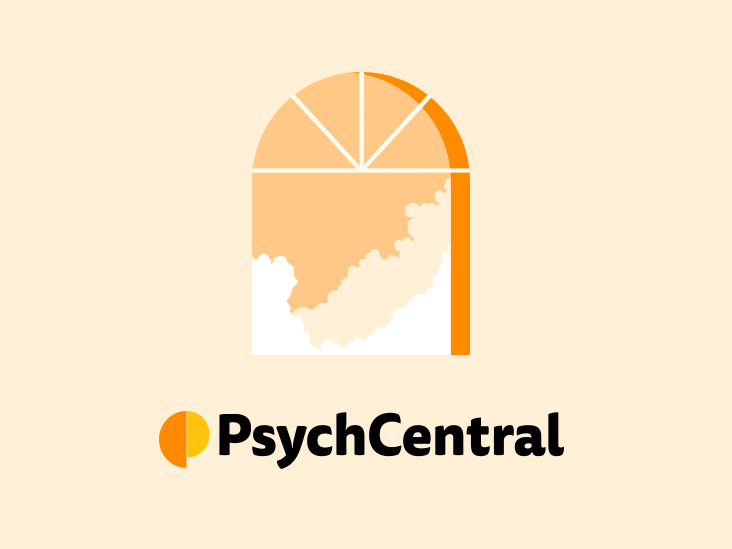
 psychcentral.com
psychcentral.com
Drug Interaction Checker
https://www.drugs.com/interaction/list/?drug_list=Advice on medications will not be given on SaSu, as it is always recommended to speak to a psychiatrist, doctor, or qualified pharmacist.
However, links will be given to information about common medications and known side effects, and conditions which they are used to treat. Sometimes psychiatric medications can be controversial as there are members and communities who have experienced side effects such as PSSD (the risk for which has been calculated as approximately 1 in 216 patients, or 0.46% of certain anti-depressant users) and Tardive Dyskinesia which the medical community is not always very receptive to. There are also debates around theories underpinning the use of SSRIs for depression. While the risks are there, those risks can also be outweighed by the benefits that some people experience from taking psychiatric medications. So, it is good to research medications properly in order to make an informed choice as to which, if any, medications to take.
Info about psych medications and conditions that they are commonly used for
List of psychiatric medications by condition treated - Wikipedia
Directory of psych medications and their recognised side-effects

Psychiatric Medications
Have a question about a psychiatric medication or drug? Our psychiatric medication drug reference guide will help you learn more about psychiatric medications, their proper
Drug Interaction Checker
Pill Identifier
E.g you found a pill and do not know what it is

Pill Identification Tool
Use WebMD’s Pill Identifier to find and identify any over-the-counter or prescription drug, pill, or medication by color, shape, or imprint and easily compare pictures of multiple drugs.
Psychedelic Drugs
International psychedelic clinical trial locator

Psilocybin
More research in general is needed and psilocybin is currently under-researched for PTSD.
Info taken from https://www.ncbi.nlm.nih.gov/pmc/articles/PMC9779908/
MDMA
LSD
Lysergic acid diethylamide (LSD) is a chemically synthesized hallucinogen, developed from ergot, a kind of mold that grows on the rye grain. Also known simply as acid, LSD was widely used in the 1960s until it was made illegal. Use of LSD has continued, despite being a controlled substance. Clinical research into LCD with modern standards is still relatively new. Effects can take between 20 mins and 2 hours to kick in and can last for 6-12 hours. Colours, sounds, objects and even time can all seem different and potentially strange and disturbing.
Research has shown positive results in anxiety, depression, psychosomatic symptoms, substance abuse and anxiety relating to life-threatening illness. Effects have been measured from 3 weeks to over 12 months.
However research quality has been mixed and the amount of resewrch is still limited. LSD is under-researched for PTSD
Info taken from
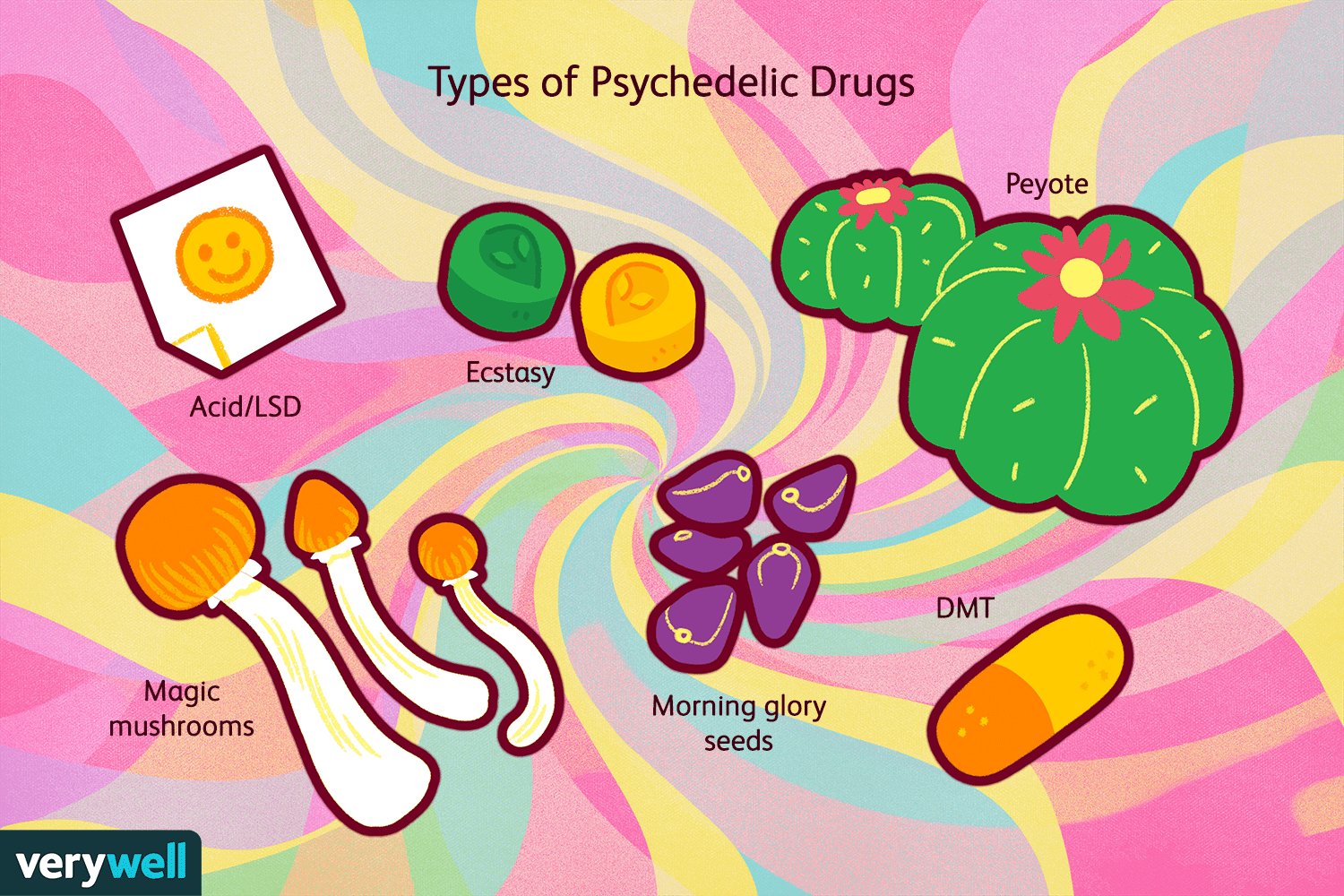
 www.verywellmind.com
www.verywellmind.com
 www.talktofrank.com
www.talktofrank.com
Ketamine
Info taken from https://www.ncbi.nlm.nih.gov/pmc/articles/PMC9710723/
Esketamine (Spravato)
DMT
Ayahuasca
Psychedelics are also known as hallucinogens and are a class of drugs that cause changes in cognitive processes, mood, and perception of reality. Psychedelics are slowly reappearing in psychology and psychiatry as a viable way to treat anxiety, depression, post-traumatic stress disorder (PTSD), addiction, eating disorders and more. However, regulated treatments are currently experimental and not accessible to many people. Current access for many is through clinical studies. Taking psychedelics out of a control environment is illegal and can carry many risks - info is available on many of them at https://www.talktofrank.com/drug/
International psychedelic clinical trial locator

Psychedelic Clinical Trial: Enroll in Psychedelic Research Today
Follow these steps to join an ongoing psychedelic clinical trial today. Use the map and list to search for current research studies near you.
psychedelic.support
Psilocybin
Psilocybin, also called magic mushrooms, is a schedule one controlled substance. Psilocybin mushrooms are primarily found in South America, Mexico, and subtropical regions of the US, and are ingested either via brewing tea or consuming the mushrooms raw or dried. Psilocybin can be microdosed or macrodosed.
Studies have shown positive responses in patients with depression, anxiety related to dying, tobacco addiction, and OCD. However, the response to the psychedelic drugs is not predictable. While in controlled settings most patients show encouraging responses whereas uncontrolled settings are more risky and adverse experiences more frequent.
Research also shows rapid and positive changes for patients in microdosing trials with positive effects still seen after 6 months. Considered safe in clinical settings and low abuse potential. However antidepressants 'downregulate the 5-HT2A receptor' which is the receptor that psilocybin targets for it to work, so patients might need to stop taking anti-depressants etc before psilocybin treatment which could be risky for some people.
Studies have shown positive responses in patients with depression, anxiety related to dying, tobacco addiction, and OCD. However, the response to the psychedelic drugs is not predictable. While in controlled settings most patients show encouraging responses whereas uncontrolled settings are more risky and adverse experiences more frequent.
Research also shows rapid and positive changes for patients in microdosing trials with positive effects still seen after 6 months. Considered safe in clinical settings and low abuse potential. However antidepressants 'downregulate the 5-HT2A receptor' which is the receptor that psilocybin targets for it to work, so patients might need to stop taking anti-depressants etc before psilocybin treatment which could be risky for some people.
More research in general is needed and psilocybin is currently under-researched for PTSD.
Info taken from https://www.ncbi.nlm.nih.gov/pmc/articles/PMC9779908/
MDMA
MDMA (3,4-Methylenedioxymethamphetamine) was first created in 1912 as a part of the process of making medicine that helps control bleeding. It was not widely known until the 1970s when its psychoactive effects were discovered. It gained the attention of many psychotherapists, who started using it as a tool for psychotherapy. It became widely known as a "party drug" in 1985, after which the U.S. Drug Enforcement Administration placed it on schedule 1 of the Controlled Substances Act, making its therapeutic use illegal. Despite its initial therapeutic use, no clinical trials were conducted until 2000. After this, it has been studied as a potential treatment for PTSD, alcohol use disorder, and social anxiety in autistic adults.
MDMA makes people more social and has been shown to raise users' judgments of openness, trust, and interpersonal closeness. From a neurobiological perspective, MDMA has been shown to reduce activity in the amygdala, a region of the brain associated with fear and anxiety, while increasing activity in the frontal cortex, a region involved in higher-level thinking and decision-making. This may benefit people with PTSD, as they often have impaired frontal cortex activity.
MDMA research into PTSD has shown much higher results against a placebo (83% of patients no longer meeting criteria for PTSD in one study, as opposed to only 25% of the patients in the placebo group) when combined with psychotherapy. Positive effects have been observed 3 years after treatment. Risks include potential neuro-toxicity aka potential damage to the brain when used incorrectly, and abuse if used out of controlled clinical settings.
Info taken from https://www.ncbi.nlm.nih.gov/pmc/articles/PMC9710723/
Follow USA MDMA research at https://maps.org/mdma/ptsd/
MDMA research into PTSD has shown much higher results against a placebo (83% of patients no longer meeting criteria for PTSD in one study, as opposed to only 25% of the patients in the placebo group) when combined with psychotherapy. Positive effects have been observed 3 years after treatment. Risks include potential neuro-toxicity aka potential damage to the brain when used incorrectly, and abuse if used out of controlled clinical settings.
Info taken from https://www.ncbi.nlm.nih.gov/pmc/articles/PMC9710723/
Follow USA MDMA research at https://maps.org/mdma/ptsd/
LSD
Lysergic acid diethylamide (LSD) is a chemically synthesized hallucinogen, developed from ergot, a kind of mold that grows on the rye grain. Also known simply as acid, LSD was widely used in the 1960s until it was made illegal. Use of LSD has continued, despite being a controlled substance. Clinical research into LCD with modern standards is still relatively new. Effects can take between 20 mins and 2 hours to kick in and can last for 6-12 hours. Colours, sounds, objects and even time can all seem different and potentially strange and disturbing.
Research has shown positive results in anxiety, depression, psychosomatic symptoms, substance abuse and anxiety relating to life-threatening illness. Effects have been measured from 3 weeks to over 12 months.
However research quality has been mixed and the amount of resewrch is still limited. LSD is under-researched for PTSD
Info taken from

What Are Psychedelic Drugs?
Psychedelic drugs (hallucinogens)—chemicals such as LSD and plants such as peyote and magic mushrooms. While generally not addictive, there are other serious risks.
LSD | FRANK
LSD or ‘acid’ is a powerful hallucinogenic drug. Time, movement, color and sound can appear different depending on the 'trip'. Find out more from FRANK. | FRANK
Ketamine
Ketamine, aka 'racemic ketamine' was first synthesized in 1962. It was approved as an anesthetic in 1970 and is often referred to as a "dissociative psychedelic". There are different kinds of ketamine in medicine, some given nasally and others through IV and others intra-muscular (IM).
IV-Ketamine-assisted psychotherapy has been used to treat alcoholism and heroin addiction since the 1990s. Research on ketamine has grown in the last 20 years as a treatment option for various psychiatric conditions, with positive results for depression shown in research since 2000. Studies examining its antidepressant benefits and its implications on suicidal ideation have increased exponentially since then. It is also a candidate for focusing on emotional memories and is being researched more extensively for the treatment of PTSD. With regard to IV vs IM, both are shown to be similar in effectiveness and safety.
Current studies for PTSD are sparse but positive. Longevity of effects only measured for just over a month.
Drowsiness, nausea, dizziness, altered vision, altered perception, and dose-dependent dissociative symptoms are among the most reported ketamine adverse effects. Effects on blood pressre make Ketamine unsuitable for some people with heart disease and hypertension.
IV-Ketamine-assisted psychotherapy has been used to treat alcoholism and heroin addiction since the 1990s. Research on ketamine has grown in the last 20 years as a treatment option for various psychiatric conditions, with positive results for depression shown in research since 2000. Studies examining its antidepressant benefits and its implications on suicidal ideation have increased exponentially since then. It is also a candidate for focusing on emotional memories and is being researched more extensively for the treatment of PTSD. With regard to IV vs IM, both are shown to be similar in effectiveness and safety.
Current studies for PTSD are sparse but positive. Longevity of effects only measured for just over a month.
Drowsiness, nausea, dizziness, altered vision, altered perception, and dose-dependent dissociative symptoms are among the most reported ketamine adverse effects. Effects on blood pressre make Ketamine unsuitable for some people with heart disease and hypertension.
Info taken from https://www.ncbi.nlm.nih.gov/pmc/articles/PMC9710723/
Esketamine (Spravato)
Esketamine is a modified type of ketamine that has been given USA FDA approval for Treatment Resistant Depression which 'standard' racemic Ketamine as of 2023 has not and is used off-label. Esketamine is claimed to be more potent than racemic ketamine and hence used more in clinical settings, although there are debates around which type of ketamine treatment is more effective in the long and short term.
Esketamine (brand name Spravato) is administered via nasal spray in a supervised clinical environment and patients are monitored for 2 hours.
Info taken from
Esketamine (brand name Spravato) is administered via nasal spray in a supervised clinical environment and patients are monitored for 2 hours.
Info taken from
DMT
Dimethyltryptamine (DMT) is a naturally occurring plant-based psychedelic found in the bark and nuts of certain trees from Central and South America. DMT is found naturally in a variety of plants and has a long history as the psychoactive component in ayahuasca. The effects of DMT are much shorter than those of other psychedelics, typically lasting only an hour.
A general search did not bring up any therapeutic studies for DMT or for clinical benefits.
A general search did not bring up any therapeutic studies for DMT or for clinical benefits.
Ayahuasca
Ayahuasca is a psychedelic tea originating from the Upper Amazon in South America. It is typically prepared from two plants– Psycotra viridis, containing the psychedelic compound DMT, and Banisteriopis Caapi (the ayahuasca vine). Emerging research into ayahuasca on brain function and potential clinical applications suggest some positive effects on mental wellbeing. After an approximately 35 to 40-min latency period, consumption of ayahuasca induces a trip that lasts approximately 4 hours.
Ayahuasca has a long history of ceremonial consumption among various indigenous populations in countries such as Bolivia, Ecuador, and Peru. Ayahuasca is tradinionally considered an important element of shamanic tradition and as a medicine. As such, it is consumed within a ceremony or ritual under the guidance of a Shaman; a person of significant social standing who is sought for the healing of physical, emotional and psychological issues
In clinical settings, preliminary observations indicate pain-relief and antidepressant effects, along with reductions in suicidality in people with treatment-resistant depression. It may have a role in supporting people through addiction rehabilitation. Clinical trials have demonstrated improvements in hopefulness, empowerment, mindfulness, and quality of life and outlook have been observed in those with dependency on other substances, as well as reductions in self-reported use of tobacco, alcohol and cocaine.
Side effects can include dizziness, diarrhea, nausea, and vomiting.
More research needed.
Info taken from https://www.drugscience.org.uk/drug-information/ayahuasca/#Ayahuasca1
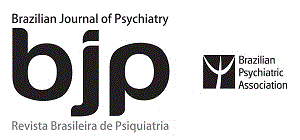
 www.scielo.br
www.scielo.br
Ayahuasca has a long history of ceremonial consumption among various indigenous populations in countries such as Bolivia, Ecuador, and Peru. Ayahuasca is tradinionally considered an important element of shamanic tradition and as a medicine. As such, it is consumed within a ceremony or ritual under the guidance of a Shaman; a person of significant social standing who is sought for the healing of physical, emotional and psychological issues
In clinical settings, preliminary observations indicate pain-relief and antidepressant effects, along with reductions in suicidality in people with treatment-resistant depression. It may have a role in supporting people through addiction rehabilitation. Clinical trials have demonstrated improvements in hopefulness, empowerment, mindfulness, and quality of life and outlook have been observed in those with dependency on other substances, as well as reductions in self-reported use of tobacco, alcohol and cocaine.
Side effects can include dizziness, diarrhea, nausea, and vomiting.
More research needed.
Info taken from https://www.drugscience.org.uk/drug-information/ayahuasca/#Ayahuasca1

Antidepressant effects of a single dose of ayahuasca in patients with recurrent depression: a preliminary report
Objectives: Ayahuasca (AYA), a natural psychedelic brew prepared from Amazonian plants and rich...
Medical / Surgical Approaches
Transcranial magnetic stimulation (TMS)
Pros
- Non-invasive
- Absence of sustained side effects which are associated with medications
- Does not interfere with other daily activities
- No effect on memory or cognition in comparison to other treatments such as ECT
Cons
- Time commitment - sessions are once daily five days per week for six weeks
- Low risk of seizure (1/89,000)
- Can cause mild and temporary side effects such as headaches
Info taken from
 www.mayoclinic.org
www.mayoclinic.org

 www.brainsway.com
www.brainsway.com

 www.floridatmsclinic.com
www.floridatmsclinic.com
Transcranial magnetic stimulation (TMS) is a procedure that uses magnetic fields to stimulate nerve cells in the brain to improve symptoms of major depression. It's called a "noninvasive" procedure because it's done without using surgery or cutting the skin. Approved by the U.S. Food and Drug Administration (FDA), TMS usually is used only when other depression treatments haven't been effective.
The FDA also approved TMS for obsessive-compulsive disorder (OCD), migraines and to help people stop smoking when standard treatments haven't worked well. Research continues into other potential uses for TMS, including epilepsy.
When used for depression, OCD and to stop smoking, this treatment involves delivering repeated magnetic pulses, so it's called repetitive TMS or rTMS.
Deep TMS treatment claims to have been proven to offer significant results by directly stimulating deeper and broader areas of the brain than standard rTMS, effectively treating conditions such as depression, anxious depression, obsessive-compulsive disorder, and smoking addiction.
The FDA also approved TMS for obsessive-compulsive disorder (OCD), migraines and to help people stop smoking when standard treatments haven't worked well. Research continues into other potential uses for TMS, including epilepsy.
When used for depression, OCD and to stop smoking, this treatment involves delivering repeated magnetic pulses, so it's called repetitive TMS or rTMS.
Deep TMS treatment claims to have been proven to offer significant results by directly stimulating deeper and broader areas of the brain than standard rTMS, effectively treating conditions such as depression, anxious depression, obsessive-compulsive disorder, and smoking addiction.
Pros
- Non-invasive
- Absence of sustained side effects which are associated with medications
- Does not interfere with other daily activities
- No effect on memory or cognition in comparison to other treatments such as ECT
Cons
- Time commitment - sessions are once daily five days per week for six weeks
- Low risk of seizure (1/89,000)
- Can cause mild and temporary side effects such as headaches
Info taken from
Transcranial magnetic stimulation - Mayo Clinic

What is Deep TMS and How Does it Work? | BrainsWay
How does Deep TMS work? Learn about the Deep TMS treatment process and its ability to safely regulate neural activity for greater well-being. Read more >

PROS & CONS OF TMS THERAPY [2024]
So you want to weigh the benefits vs. the risks of TMS therapy, especially compared to other treatment options available today. Here you can read a full list of all the advantages and disadvantages of TMS therapy.
Electro-Convulsive Therapy
ECT is used for some types of severe mental illness. It is usually considered when other treatment options, such as psychotherapy or medication, have not been successful or when someone is very unwell and needs urgent treatment.
ECT is given as a course of treatments, typically twice a week for 3–8 weeks. If you have ECT, it will take place under general anaesthetic. This means that you will be asleep while it happens.
While you are asleep, your brain will be stimulated with short electric pulses. This causes a seizure which lasts for less than two minutes. As well as an anaesthetic, you will be given a muscle relaxant which reduces how much your body moves during the seizure.
ECT is most commonly used for severe depression that hasn't responded to other treatments. It is also used to treat catatonia, an uncommon condition in which a patient may stop talking, eating or moving. Occasionally, it is used to treat people in the manic phase of bipolar disorder or when people have mixed symptoms of both mania and depression.
ECT is not advised for the treatment of anxiety disorders or most other psychiatric conditions.
Pros
- Considered effective by medical community for treatment resistant depression
- Evidence of results when other treatments have not helped
Cons
- Side effects can be severe, including cognitive problems and memory loss but are claimed to rectify after a few days
- Existing debates over effectiveness and safety, with some researchers calling for suspension of treatment use until further quality research is conducted and claims that existing research is biased and poor quality
- Considered last resort treatment owing to stigma
MST-specific information begins at 6:30 into video
Info taken from
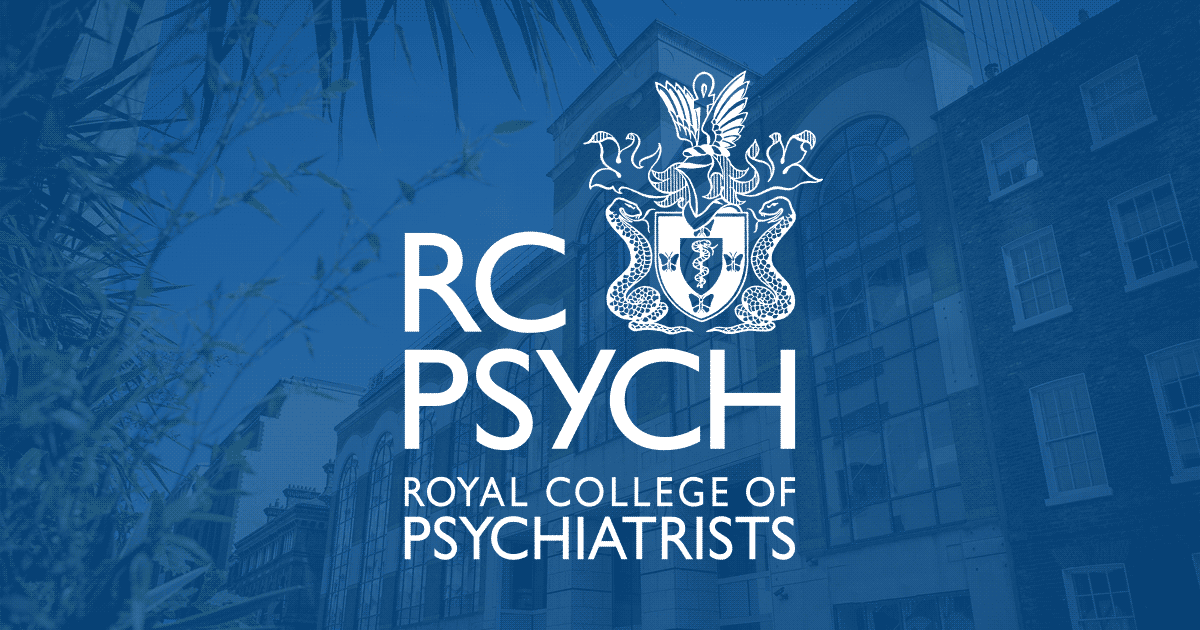
 www.rcpsych.ac.uk
www.rcpsych.ac.uk

 pubmed.ncbi.nlm.nih.gov
pubmed.ncbi.nlm.nih.gov
ECT is given as a course of treatments, typically twice a week for 3–8 weeks. If you have ECT, it will take place under general anaesthetic. This means that you will be asleep while it happens.
While you are asleep, your brain will be stimulated with short electric pulses. This causes a seizure which lasts for less than two minutes. As well as an anaesthetic, you will be given a muscle relaxant which reduces how much your body moves during the seizure.
ECT is most commonly used for severe depression that hasn't responded to other treatments. It is also used to treat catatonia, an uncommon condition in which a patient may stop talking, eating or moving. Occasionally, it is used to treat people in the manic phase of bipolar disorder or when people have mixed symptoms of both mania and depression.
ECT is not advised for the treatment of anxiety disorders or most other psychiatric conditions.
Pros
- Considered effective by medical community for treatment resistant depression
- Evidence of results when other treatments have not helped
Cons
- Side effects can be severe, including cognitive problems and memory loss but are claimed to rectify after a few days
- Existing debates over effectiveness and safety, with some researchers calling for suspension of treatment use until further quality research is conducted and claims that existing research is biased and poor quality
- Considered last resort treatment owing to stigma
MST-specific information begins at 6:30 into video
Info taken from

Electroconvulsive therapy (ECT)
This information looks at ECT (electroconvulsive therapy), including how it works, why it's used, effects and side-effects, and alternative treatments.

Ketamine versus ECT for Nonpsychotic Treatment-Resistant Major Depression - PubMed
Ketamine was noninferior to ECT as therapy for treatment-resistant major depression without psychosis. (Funded by the Patient-Centered Outcomes Research Institute; ELEKT-D ClinicalTrials.gov number, NCT03113968.).
Magnetic Seizure Therapy
Pros
Side effects closer to rTMS which are milder and more temporary
Claimed to offer strengths of ECT with fewer side effects
Treats more focused brain areas than ECT which is more blunt and generalised
Cons
In early stages of research so may be difficult to access
Youth of method means less data
https://www.nimh.nih.gov/news/scien...troconvulsive-therapy-for-treating-depression
Magnetic seizure therapy (MST) is a proposed form of electrotherapy and electrical brain stimulation. It is currently being investigated for the treatment of major depressive disorder, treatment-resistant depression (TRD), bipolar depression, schizophrenia and obsessive-compulsive disorder. MST is stated to work by inducing seizures via magnetic fields, in contrast to ECT which does so using alternating electric currents. Additionally, MST works in a more concentrated fashion than ECT, thus able to create a seizure with less of a total electric charge. In contrast to (r)TMS, the stimulation rates are higher (e.g. 100 Hz at 2 T) resulting in more energy transfer. Currently it is thought that MST works in patients with major depressive disorder by activating the connection between the subgenual anterior cingulate cortex and the parietal cortex.
Pros
Side effects closer to rTMS which are milder and more temporary
Claimed to offer strengths of ECT with fewer side effects
Treats more focused brain areas than ECT which is more blunt and generalised
Cons
In early stages of research so may be difficult to access
Youth of method means less data
https://www.nimh.nih.gov/news/scien...troconvulsive-therapy-for-treating-depression
Last edited by a moderator:

